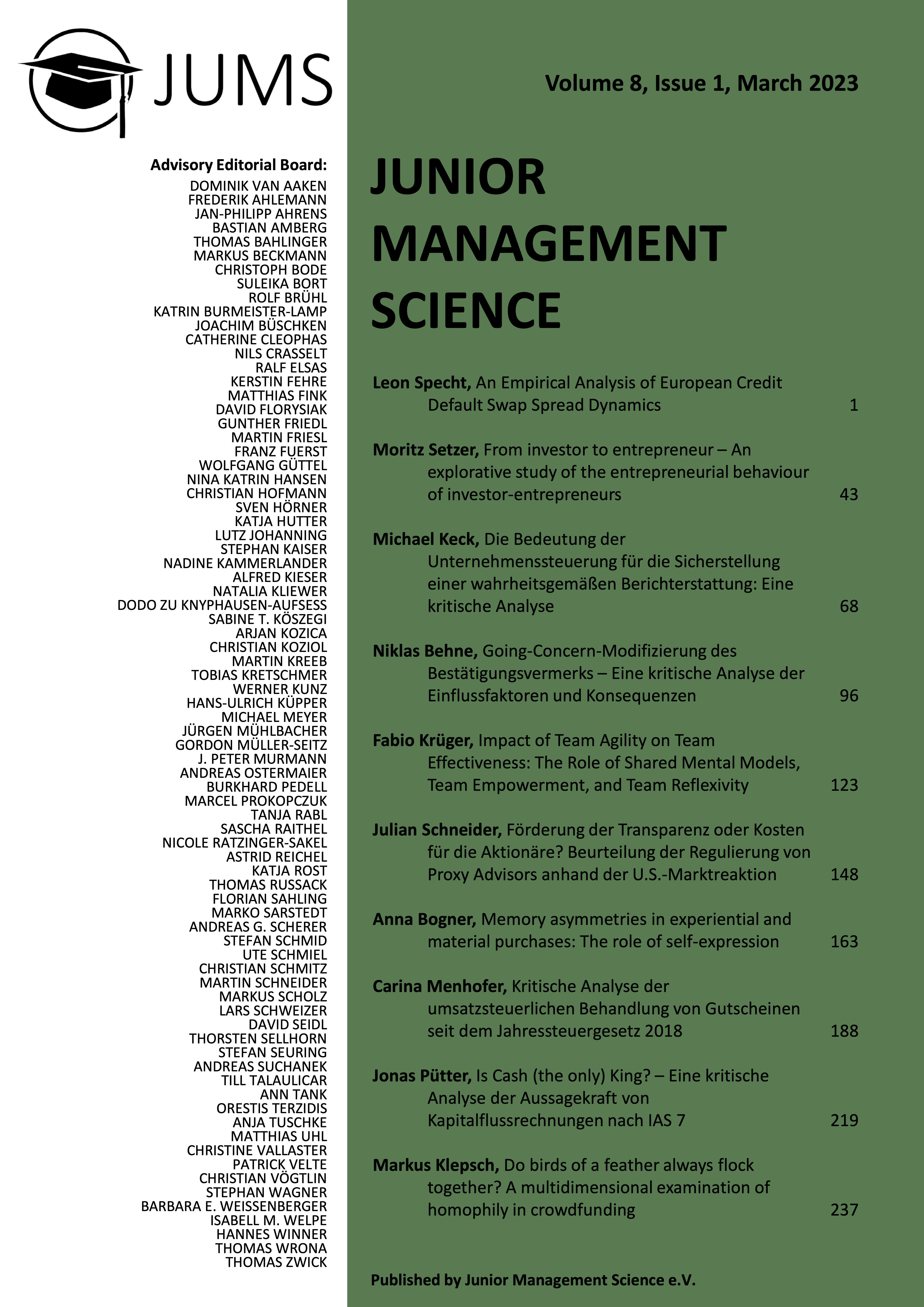Abstract
I analyze the dynamics of European credit default swap spreads by estimating CDS spreads via an extension of the structural credit risk models by Black and Cox (1976) as well as Leland (1994), the so called CreditGrades model proposed by Finger et al. (2002). Using two different procedures in approximating the asset volatility surface of obligors, the models are calibrated by means of historical equity volatility and volatility extracted out of at-the-money options. I discover that model performance strongly depends on the distribution of input parameters clustered by economical sectors. Model spreads exhibit significant correlation with market spreads and seem to predict market spreads contingent on sectors and model calibration techniques. The gap between model and market spreads, derived model spreads and empirical market spreads are analyzed by running panel regressions in fashion of Collin-Dufresn et al. (2001) and Bedendo et al. (2011). These show that times of disconnectedness between credit and equity markets, model inherent misspecifications as well as possible market inefficiencies can contribute to the inability to estimate spreads reliably. Robustness checks show that determinants of gap, model and market spreads are sector specific, time varying and tenor dependent.
Keywords: Credit Risk; Credit Risk Modelling; Structural Models; Credit Risk Management; Quantitative Finance.

Dieses Werk steht unter der Lizenz Creative Commons Namensnennung 4.0 International.
Copyright (c) 2023 Leon Specht

